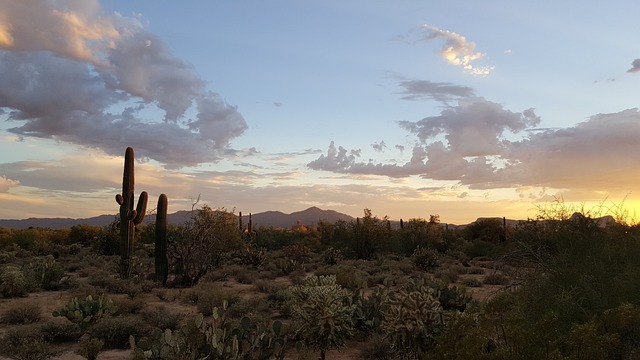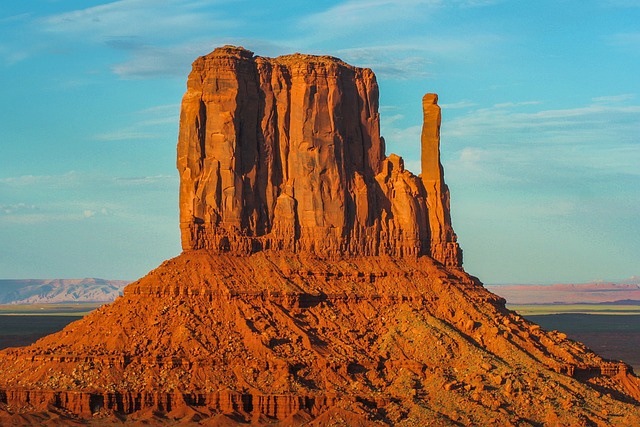Discover Tucson's rich history by visiting its UNESCO World Heritage sites, museums, and landmarks that reflect the city's Indigenous, Spanish, Mexican, and colonial influences. Key attractions include Presidio San Agustín del Tucson, Mission San Xavier del Bac, and the Arizona State Museum, which offer a deep dive into Southern Arizona's past. Travelers can enjoy the cultural richness of the Museum of the Moon in an 1800s building and learn about pivotal moments in Tucson's history. For those exploring Tucson's historical sites, it's recommended to visit during off-peak hours for a more tranquil experience and possibly join guided tours for a comprehensive understanding. Tucson travel tips suggest timing visits to coincide with special events to enhance the educational and enlightening journey through this city's storied past. Tucson's historical attractions provide an immersive experience that encapsulates its enduring legacy and cultural heritage, making it a must-visit for any history enthusiast.
Embark on a journey through time with our exploration of Tucson’s historical sites and museums. This article offers an enriching guide to uncover the layers of history that shape this vibrant area. From ancient Native American settlements to Spanish colonial influences and the city’s pivotal role in the American West, Tucson’s past is as diverse as its modern-day culture. With our tailored Tucson Travel Tips, you’ll gain a deeper understanding of the region’s rich history through key landmarks and exhibits that bring the stories of the past to life. Join us as we delve into the heart of Tucson’s heritage.
- Exploring Tucson's Past: A Guide to Historical Sites and Museums for a Deeper Understanding of the Area
- Tucson Travel Tips: Uncovering the Rich History through Key Landmarks and Exhibits
Exploring Tucson's Past: A Guide to Historical Sites and Museums for a Deeper Understanding of the Area

Embarking on a journey through Tucson’s storied past offers an enriching experience for any traveler seeking to understand the region’s deep-rooted history and cultural tapestry. Tucson, nestled in the heart of Southern Arizona, is replete with historical sites and museums that showcase its diverse heritage, from the indigenous tribes who once inhabited the area to the Spanish explorers, the Mexican era, and beyond. Visitors can begin their exploration at the Presidio San Agustín del Tucson State Historic Park, a UNESCO World Heritage Site, where remnants of 18th-century Spanish forts stand as silent sentinels to the city’s early days. This site, alongside others like the Fort Lowell Museum and the Arizona State Museum, offers a glimpse into the lives of those who lived here long before modernity.
For those looking to delve deeper into Tucson’s rich history, the region’s museums serve as treasure troves of artifacts, from ancient Native American pottery to Spanish colonial art and military memorabilia. The Museum of the Moon, housed in a 19th-century building, provides a unique perspective on the city’s evolution through its exhibits that highlight key moments in Tucson’s history. Meanwhile, Tucson travel tips suggest visiting these sites early in the morning or later in the afternoon to avoid crowds and experience the tranquility that often envelops these historical gems. Whether it’s the architecture of the San Xavier del Bac Mission or the storied halls of the Pima County Historical Society Museum, Tucson’s historical sites and museums are a testament to its enduring legacy, inviting both residents and visitors alike to walk through time with each step.
Tucson Travel Tips: Uncovering the Rich History through Key Landmarks and Exhibits

Embarking on a journey through Tucson’s past reveals a city rich with history, culture, and natural beauty. Travelers seeking to immerse themselves in Tucson’s heritage will find a wealth of landmarks and exhibits that provide a window into the region’s diverse history. Tucson travel tips for history enthusiasts include visiting the preserved Mission San Xavier del Bac, a striking example of Spanish colonial architecture that stands as a testament to the area’s early settlers. This National Historic Landmark offers a glimpse into the lives of both the missionaries and indigenous populations who have called this region home for centuries. Another essential site is the Arizona State Museum, which houses an extensive collection showcasing the prehistoric to modern artifacts of the Southwest. Here, visitors can explore ancient Native American pottery, baskets, and tools, alongside exhibits that tell the stories of Tucson’s military forts, including Fort Lowell, where one can learn about the area’s role in both the Mexican-American War and the Civil War. Tucson travel tips recommend planning visits to coincide with special events or guided tours to enhance the educational experience and gain deeper insights into the historical significance of these sites. Whether it’s the rich tapestry of Tucson’s history at Mission San Xavier del Bac or the enlightening exhibits at the Arizona State Museum, travelers will find that Tucson’s landmarks and museums are key to understanding the soul of this vibrant city.
Embarking on a journey through Tucson’s historical sites and museums offers an enriching experience for any traveler. This exploration not only unveils the layers of history that have shaped this region but also imparts a profound understanding of its cultural heritage. With Tucson Travel Tips guiding your itinerary, you can navigate these landmarks and exhibits with ease, gaining insights into both the city’s past and its pivotal role in the broader narrative of the American Southwest. Whether you’re a history buff or a curious explorer, immersing yourself in Tucson’s rich tapestry of history through its well-preserved sites and thoughtfully curated museums will leave you with an indelible appreciation for this vibrant area.
